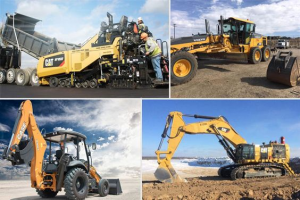Equipment Facts
Equipment is pivotal in many industries, from manufacturing and healthcare to agriculture and construction. Understanding the facts about equipment, its various types, and how it impacts our lives is essential for appreciating the advancements that shape our world. In this comprehensive guide, we will delve into equipment facts, exploring the critical role of equipment across diverse industries.
The Significance of Equipment
Before we explore specific equipment facts, let’s consider why equipment is so significant:
Efficiency:
Equipment enhances productivity by automating tasks and processes, reducing manual labor, and increasing output.
Precision
Modern equipment is designed with precision and accuracy, ensuring consistent and reliable results.
Safety
In industries such as healthcare and construction, equipment enhances safety by reducing human exposure to risks.
Advancements
Equipment innovations drive technological progress, influencing everything from medical treatments to communication systems.
Economic Impact
Equipment-intensive industries contribute significantly to the global economy, generating jobs and revenue. For more interesting information visit our website techxwebs.com
Types of Equipment
Equipment spans a broad spectrum of categories, including:
Heavy Machinery
Heavy machinery encompasses construction equipment, earthmovers, and mining machinery. These machines are designed to handle large-scale tasks, such as excavating, bulldozing, and hauling heavy loads.
Medical Equipment
In healthcare, medical equipment ranges from diagnostic devices like MRI machines to life-saving equipment like ventilators. These tools are indispensable for patient care and diagnosis.
Agricultural Equipment
Agricultural equipment includes tractors, plows, and harvesters. These machines streamline farming processes, boost crop yields, and contribute to food production.
Manufacturing Equipment
Manufacturing equipment consists of machinery used in factories for production and assembly. Robots, CNC machines, and conveyors are examples of equipment that streamline manufacturing processes.
Communication Equipment
Communication equipment comprises devices like cell phones, satellites, and radio transmitters. These technologies enable global connectivity and information exchange.
Transportation Equipment
Transportation equipment includes vehicles like cars, trucks, trains, and airplanes. They facilitate the movement of goods and people, contributing to global trade and travel.

Equipment Facts: Technological Marvels
Cranes: Engineering Wonders
- Did you know that the tallest mobile crane in the world, the Liebherr LTM 11200-9.1, can reach a height of over 500 feet? It’s used for heavy lifting in construction and infrastructure projects.
- The Tower Crane, commonly seen in skyscraper construction, was first developed in the early 20th century. Its innovative design allows it to rise alongside the building as it grows taller.
Agricultural Equipment: Feeding the World
- The modern combine harvester combines several farming tasks into one machine, revolutionizing agriculture. It can harvest, thresh, and winnow crops in a single pass.
- Precision agriculture employs GPS and sensor technology to optimize farming practices, reducing waste and increasing crop yields. It’s a key player in feeding the world’s growing population.
Equipment Facts Across Industries
Let’s explore some equipment facts specific to various industries:
Construction Industry
- The bulldozer, a staple in construction, was first invented in the early 1920s and revolutionized earthmoving.
- Cranes can lift loads that weigh several tons, making them essential for skyscraper construction.
Healthcare Industry
- The first X-ray machine was invented by Wilhelm Conrad Roentgen in 1895, revolutionizing medical diagnostics.
- Magnetic Resonance Imaging (MRI) machines use powerful magnets and radio waves to create detailed images of the human body.
Agriculture Industry
- The combine harvester, invented in the early 19th century, can perform reaping, threshing, and winnowing in one pass.
- Precision agriculture employs GPS technology and sensors to optimize crop production and reduce resource wastage.
Manufacturing Industry
- Computer Numerical Control (CNC) machines are essential for producing complex parts with high precision.
- Robots are increasingly employed in manufacturing for tasks like welding, assembly, and quality control.
Communication Industry
- The first successful transatlantic telegraph cable was laid in 1866, allowing rapid communication between Europe and North America.
- The Internet relies on a vast network of routers, switches, and data centers to transmit data globally.
Transportation Industry
- The Wright brothers’ historic flight in 1903 marked the beginning of modern aviation.
- The automotive industry continually innovates, with electric and autonomous vehicles shaping the future of transportation.
Equipment Facts: Communication and Transportation Marvels
Internet Infrastructure: Global Connectivity
- The Internet relies on a vast network of equipment to transmit data globally, including routers, switches, and data centers. The first successful transmission of data over the ARPANET (the precursor to the internet) occurred in 1969.
- Submarine cables on the ocean floor form the backbone of global internet connectivity. The most extended submarine cable, the SEA-ME-WE 3, stretches over 24,000 miles.

Aviation Advancements
The Wright brothers’ historic flight in 1903 marked the birth of modern aviation. Their aircraft, the Wright Flyer, covered 120 feet in 12 seconds.
- The world’s largest passenger airliner, the Airbus A380, has a wingspan of approximately 261 feet, making it an engineering marvel in aviation.
Conclusion
Equipment is the backbone of countless industries, driving progress, enhancing efficiency, and improving our quality of life. Understanding equipment facts and its diverse applications is crucial for appreciating the technological advancements that shape our world. Whether it’s the heavy machinery on a construction site or the medical equipment in a hospital, equipment plays a pivotal role in shaping our daily lives.
FAQs
Q1: What is the significance of equipment in modern agriculture?
A: Equipment in agriculture, such as tractors and harvesters, significantly increases crop yield, reduces labor, and enables precision farming practices.
Q2: How has equipment influenced the healthcare industry?
A: Medical equipment has revolutionized healthcare by enabling accurate diagnoses, less invasive procedures, and improved patient care.
Q3: Are there environmental considerations in the use of heavy machinery?
A: Heavy machinery can have environmental impacts, such as fuel consumption and emissions. A growing focus is developing eco-friendly equipment in the construction and agriculture sectors.
Q4: What is the difference between mechanical and electronic equipment?
A: Mechanical equipment relies on physical components and mechanisms to perform tasks. Examples include engines, gears, and levers. On the other hand, electronic equipment incorporates electronic components such as microprocessors, sensors, and circuits.
Q5: How has equipment evolved in the era of digital technology?
A: The digital age has transformed equipment in various industries. Many traditional machines and devices now incorporate digital components, enabling automation, remote monitoring, and data analysis.

